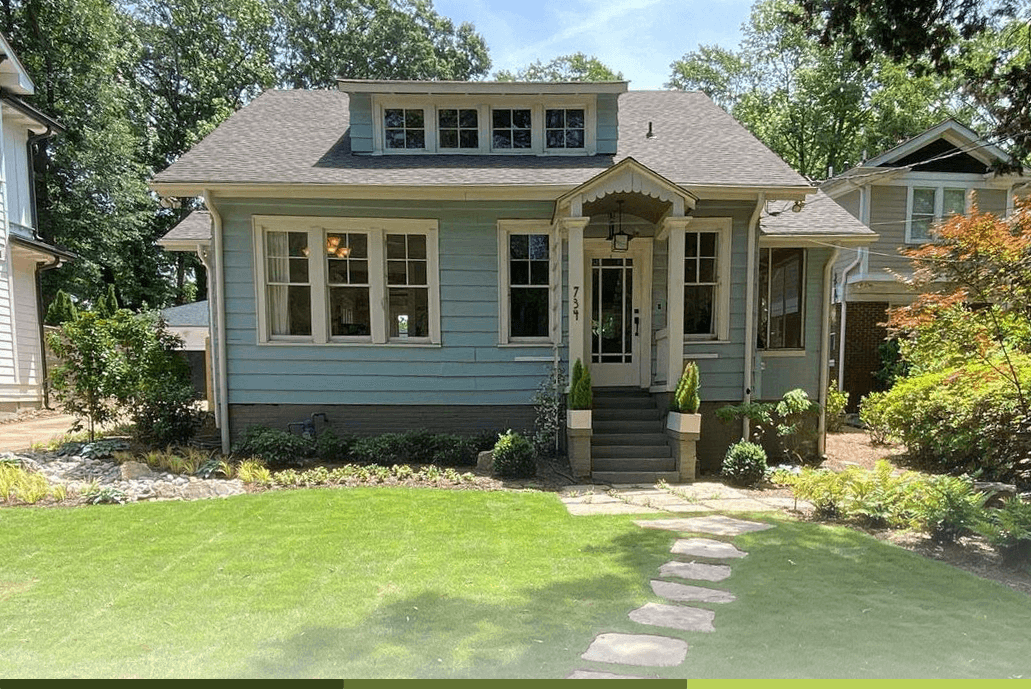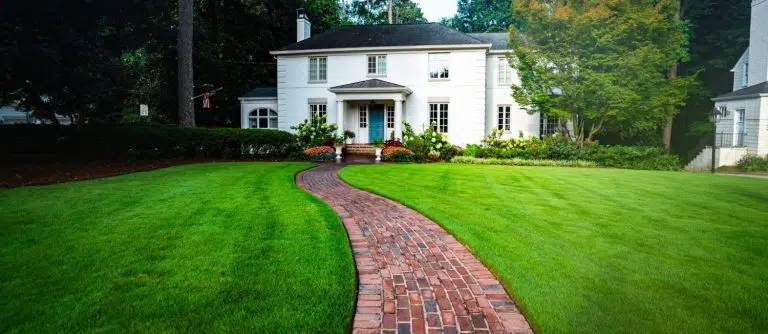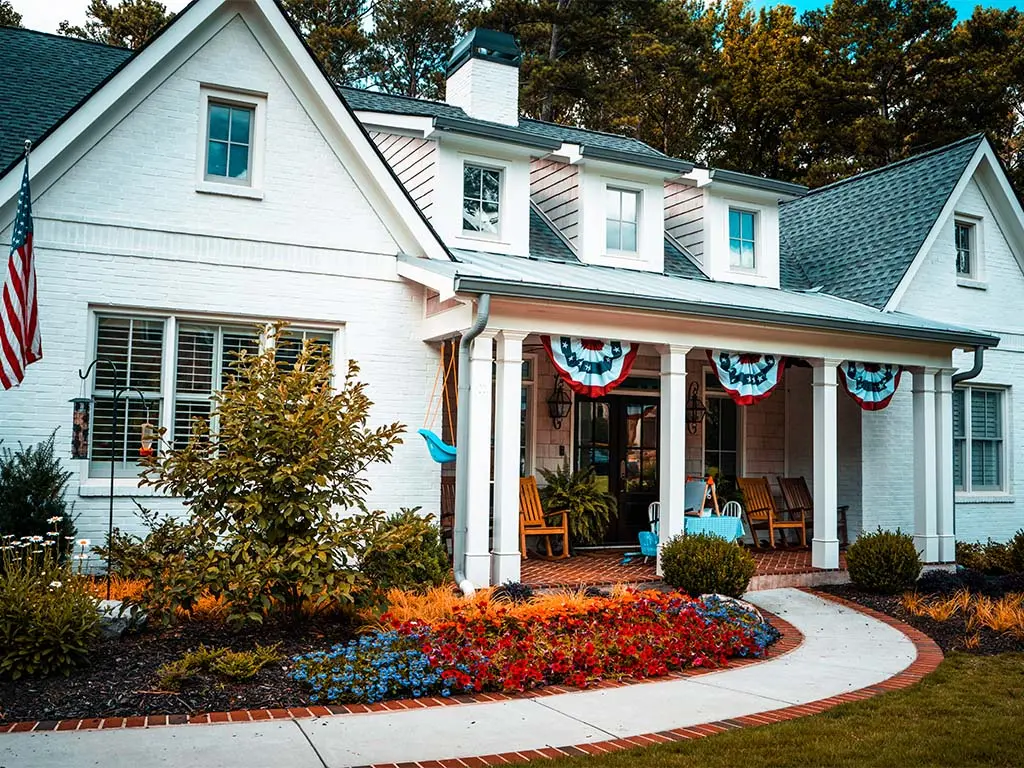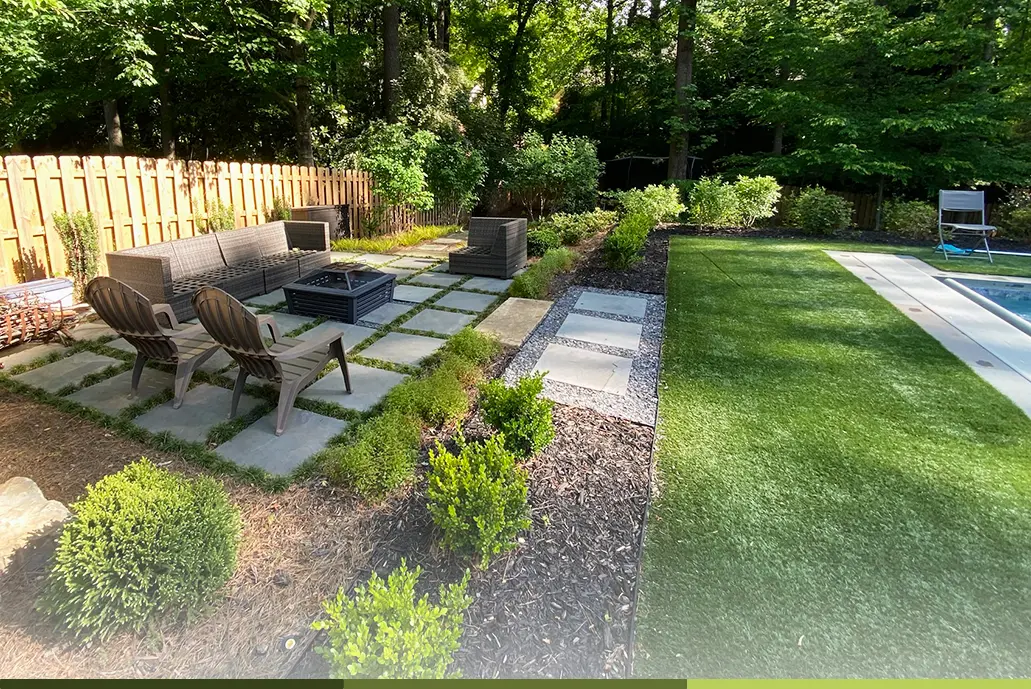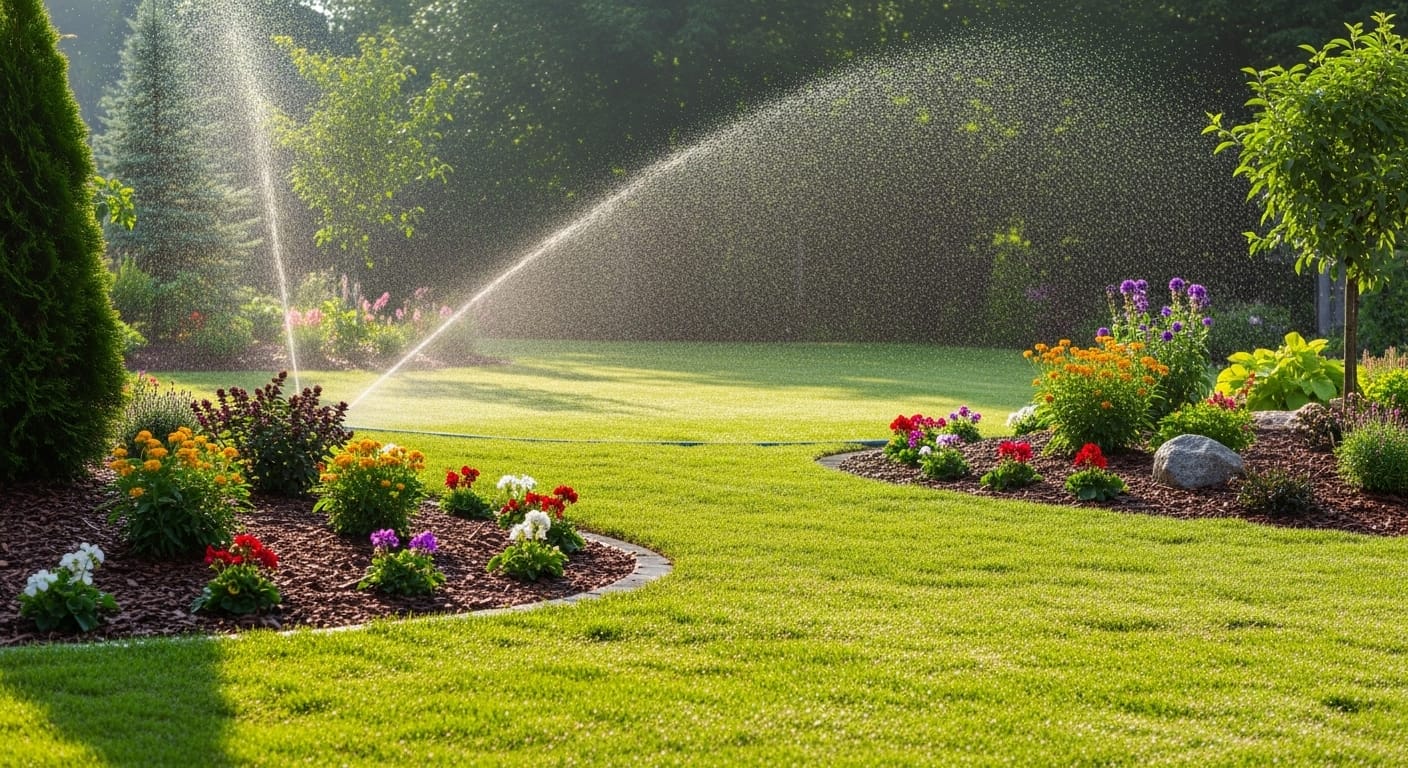Why Stone Treads Belong in Your Landscape
Stone treads solve a simple problem elegantly: they make changes in elevation safe, durable, and beautiful. A well-placed tread provides a predictable surface, reduces erosion on slopes, and defines circulation so guests naturally follow the intended path.
In landscapes where grade changes are frequent — terraces, steep front yards, or patio access — stone treads turn awkward slopes into usable, low-maintenance outdoor spaces.
If you manage property in North Druid Hills, Decatur, or Buckhead, a thoughtfully designed stone tread run will optimize yard usage and reduce long-term maintenance work.
Cost Effectiveness vs. Masonry Stairs with Footers
- Lower initial cost: Stone treads typically require less excavation and concrete work than full masonry stairs with footers, reducing labor and material costs.
- Faster installation: Treads set on compacted aggregate or leveling pads install more quickly than stairs that need cured concrete footers.
- Long-term value: Properly built stone treads need minimal upkeep and avoid cracking or settling issues that can affect concrete stairs under poor drainage or soil conditions.
- When to choose masonry: If your site requires engineered structural support, continuous load-bearing walls, or specific handrail anchoring, masonry stairs with footers may be the right, code-compliant solution.
Common Mistakes That Create Hazards
- Uneven riser heights: A common rookie mistake is creating steps with uneven risers, forcing people to adjust their stride and increasing the risk of tripping. Consistent riser height is non-negotiable for safety.
- Skipping stride-calibrated landings: Landings placed without accounting for natural walking patterns feel awkward and disrupt flow. We design landings that align with the average stride for a comfortable, natural rhythm.

Flagstone, Shapes, and Aesthetics
What is flagstone: Flat pieces of natural stone (such as sandstone, bluestone, or limestone) used for paving and treads; available in split, cleft, or sawcut finishes.
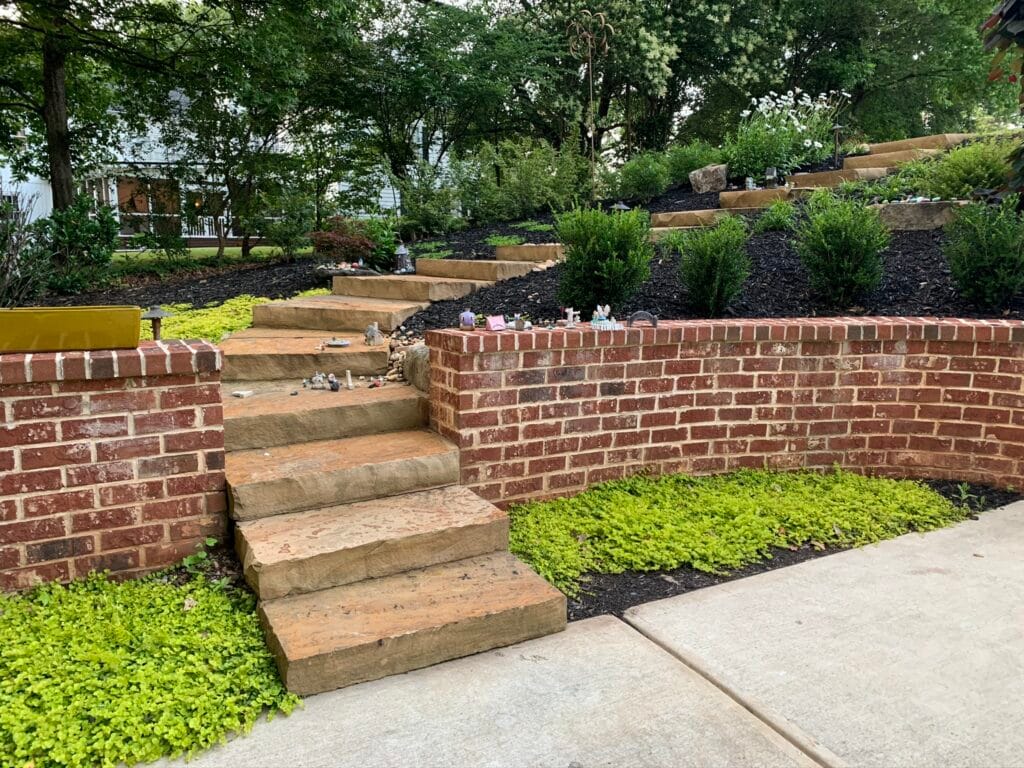
Irregular flagstone: Offers a rustic, organic look that can be stunning when an artisan calibrates each piece to achieve proper riser heights. This approach requires skill to avoid uneven steps.
Traditional stepped widths: Fixed widths like 36″ and 48″ create formal, repeatable lines and make access easier for furniture and two-way traffic.
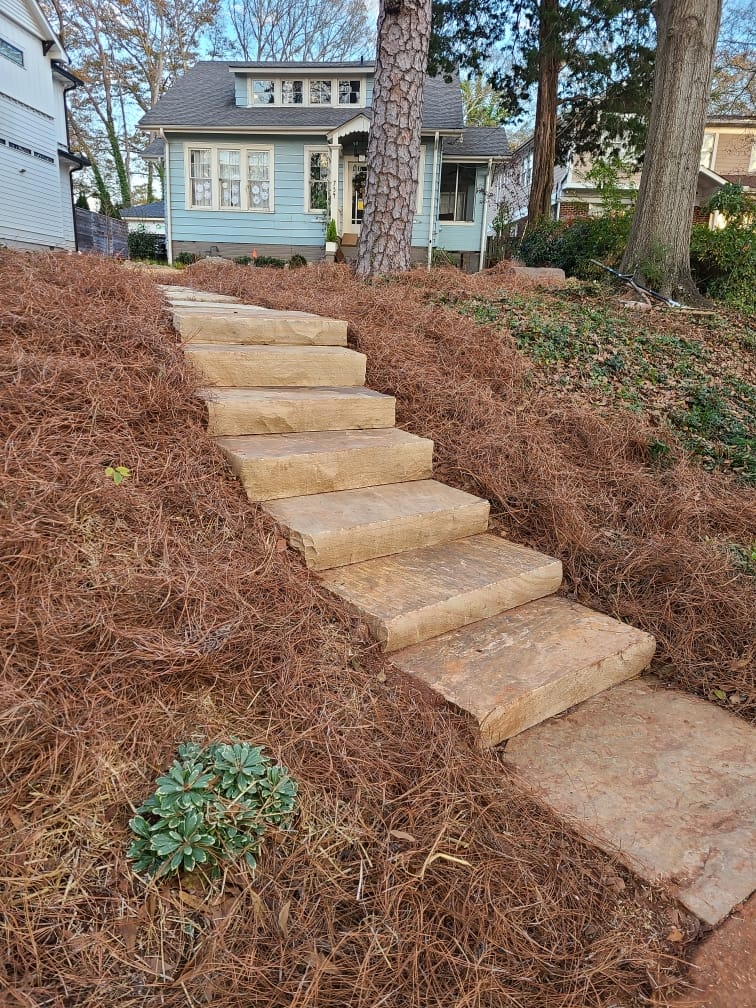
Sawcut vs. split: Recently in Atlanta, sawcut Texas limestone treads have become popular. Machine-cut treads look cleaner and more uniform, with predictable thicknesses and square edges for consistent 6″ risers. Split stone offers textured, natural faces but varies in thickness.
Final Thoughts and Next Steps
Stone treads balance beauty, safety, and cost when planned correctly. Avoid uneven risers, poorly placed landings, and random material selections.
If you want a reliable, stride-calibrated solution that fits your aesthetic — whether rustic artisan flagstone or uniform sawcut limestone — start with a measured plan and a trusted stone supplier.
📍 Serving North Druid Hills, Decatur, and Buckhead.
👉 Book a site assessment to get a custom stone tread layout and material plan for your property.

